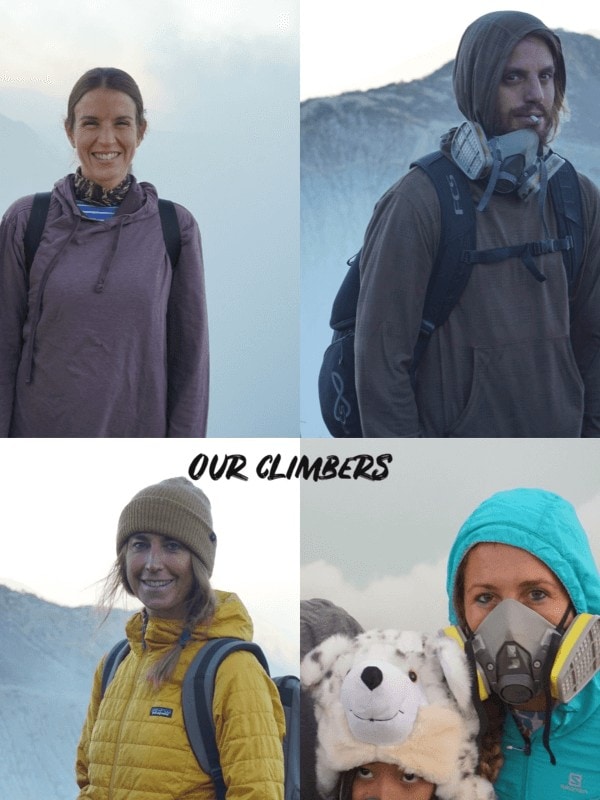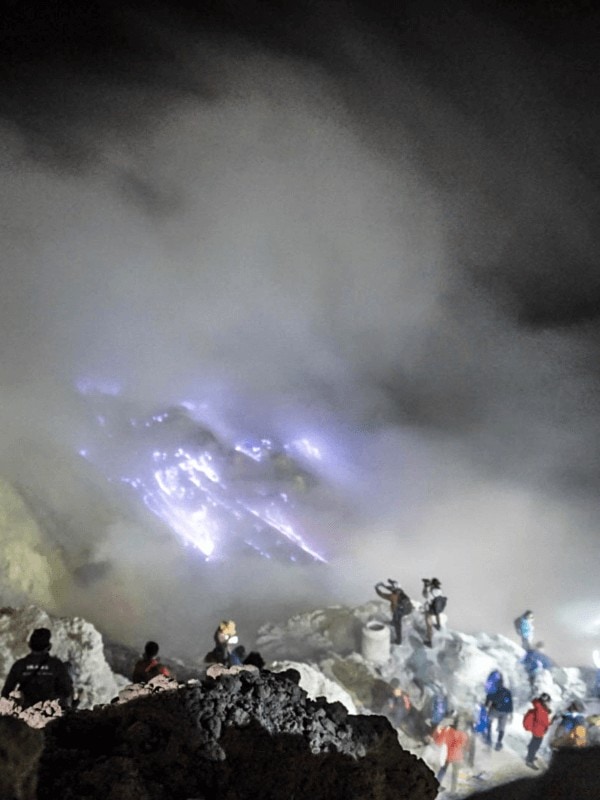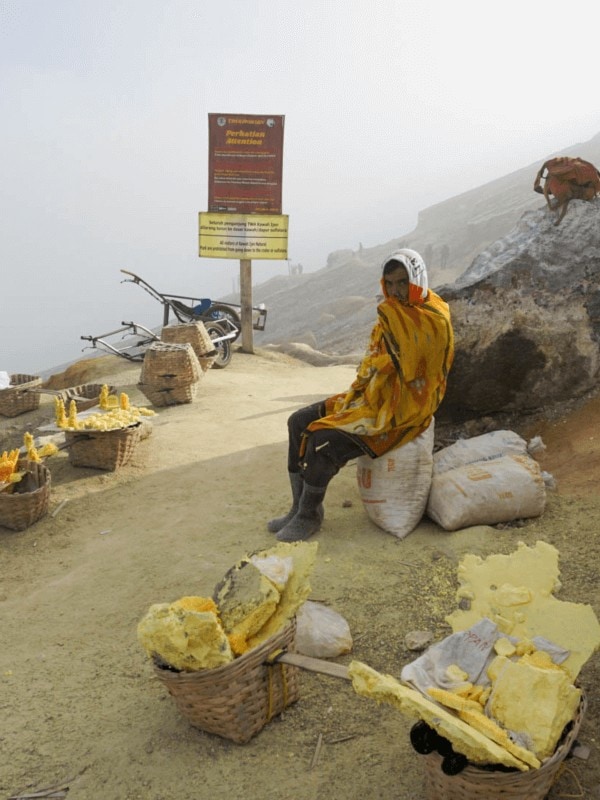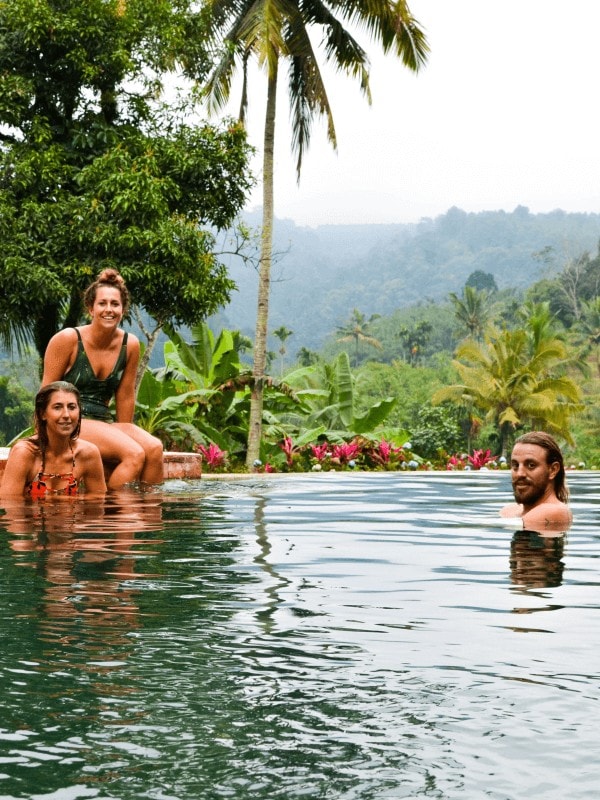Mount IJEN: Hiking inside an active volcano crater
How far would you push your limits? This time we have chosen a really extreme adventure and hiked in the middle of the night to get inside an active volcano crater in Java (Indonesia) and see the unique Blue Fires!
It’s midnight and the alarm rings! Time to put some warm clothes on and wake up after this few hours of sleep. After a short 4×4 drive we are at the bottom of Mount Ijen and ready to start our 2 hrs night hike towards the 2,799 mt volcano peak guided by the stars, few torches and other many tourists. Our guide tells us that the hike is for beginners, but some passages are steep and the more we get close to the volcano, the more the sulfur smokes make our ascend hard! At 3/4 of the hike we need to wear gas masks cos the toxic smokes are surrounding us and it’s hard to breathe. The wind is on and the smoke moves around in every direction.
We finally arrive at the top and here starts the toughest part of our hike: the descend inside the crater of this active volcano! Something like this would probably be forbidden in any first-world country with some kind of security measures, but here we are in Indonesia and whatever attracts tourists (and money) is welcome!


Blue Fires: one of the most spectacular and most unique wonders of nature in the world!
A 45 minutes hike down brings us to the most stunning views I have ever seen in my life: the Blue Fires! This electric-blue flame of Ijen is ignited sulfuric gas which emerges from cracks at temperatures up to 600 Celsius degrees. When these ignite enter Earth’s oxygen-rich atmosphere burn and generate flames that can reach the 5 meters of height. This is the largest blue fire area in the world and the lake inside the crater is the largest highly acidic crater lake on the planet due to its high sulfuric acid concentration (the PH is 0.5 only!). The turquoise-blue caldera lake is one kilometre wide and 200 meters deep. The colour of the water is a result of its extreme acidity and a high concentration of dissolved metals.
The volcano remains active: the last magmatic eruption occurred in 1817. The latest phreatic eruptions occurred in the recent 2001 and 2002. These have caused very little damage but present a danger to anyone mining sulfur or visiting the caldera.
The local heroes: the sulfur miners
We thought to be tough athletes after the hike, but there is no space for pride in Ijen. The real heroes here are the miners.
They walk up the flank of the mountain and then descend dangerous rocky paths down the steep walls of the caldera, making space through the hundreds of tourists. Then, using steel bars, they break sulfur from an outcrop, load their baskets, and make the return trip to the refinery.
They break their back carrying 80-90 kgs of sulfur up 300 metres to the crater rim, with a gradient of 45 to 60 degrees and then 3 kilometres down the mountain. Most miners make this journey twice a day. The paid is as little as 1,000 IDR per kg, which means just very few cents.
Sulfur mining at Ijen has its hazard: the steep paths are dangerous, the sulfur gases are poisonous, and occasional gas releases or phreatic eruptions have killed many miners.


Hiking a volcano from 1 am to 8 am is definitely exhausting, but if the reward is a wonderful day of absolute relax in a fantastic resort, then everything is easier!
Ijen Resort and Villas has the perfect set up for a post-climbing night! Overlooking the rice terraces and surrounded by rainforest, the views over the 4 mountains of Ijen complex are spectacular, the infinity pool is a perfect relief for your tired muscles and there are even a spa and a delicious restaurant. The rooms are spacious and the beds super comfortable! Exactly what is needed for a good rest! Let the lovely staff pamper you all day long and get ready for one of the other many excursions on offer in the surrounding area! East Java is in fact home of the Asia biggest Savannah! In stark contrast with the lush green scenery found elsewhere in Java, Bularan National Park, also known Little Africa, is home of many species like water buffalos, deers, peacocks and macaques (no lions and giraffes sorry!)
Not the classic Indonesia weather: what to bring?
Used to Indonesian tropical weather and warm temperature? Forget it! Here is real mountain stuff! The hike of Mount Ijen is a fantastic experience but it can turn into a nightmare if you come not prepared.
No matter whether you are in the world, at 2,799 meters of altitude temperatures drop and it gets cold up there! Dress up with several layers (like an onion), long socks, beanie and gloves are recommended and bring a change with you because you are going to sweat during the hike!
Gas masks can easily be rented once at Ijen or if you get a guide, he/she will bring it for you!
Receive Updates & promotions
